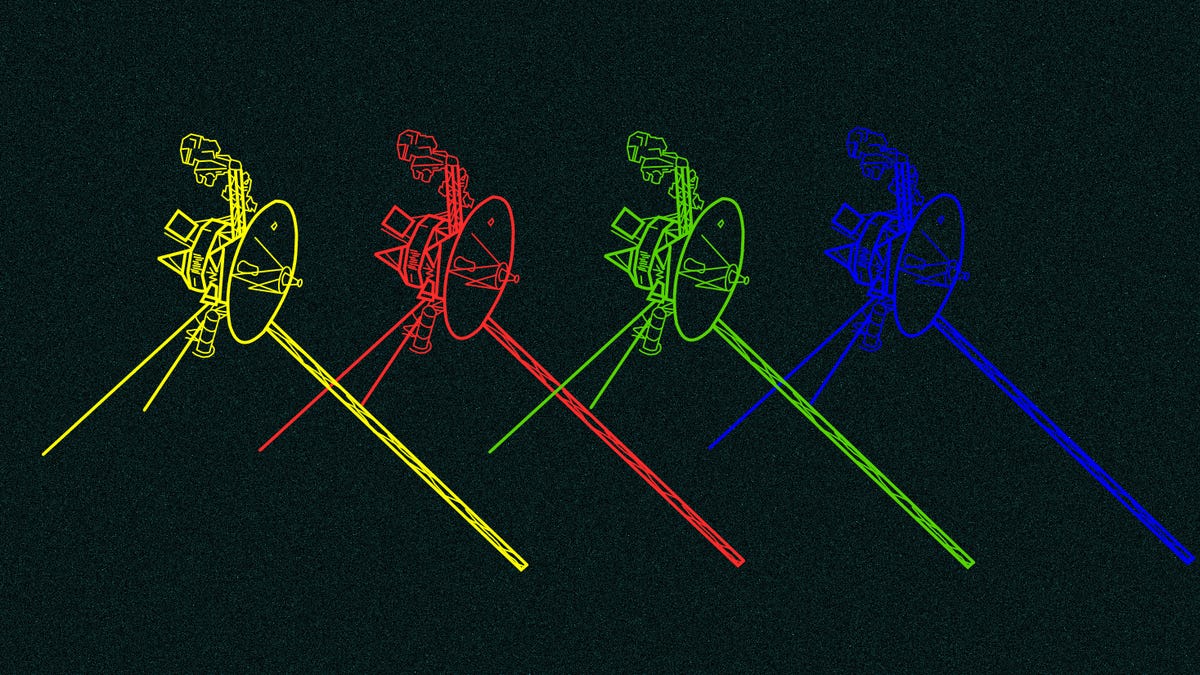NASA's Voyager 2 finds new mysteries at the edge of the solar system
Voyager 2, four decades into its mission, continues to make scientific discoveries as it crosses into interstellar space.

Voyager 2 is only the second spacecraft to reach interstellar space.
If you've ever felt like you're having an incredibly long day at work, spare a thought for NASA's Voyager probes. Launched in 1977, Voyager 1 and Voyager 2 have been traveling through space, revealing the secrets of the solar system, for the last 42 years. In all that time, they've beamed back tons of data about our place in the universe. Their journey has taken both probes beyond the reach of the farthest (dwarf) planet and into interstellar space: Voyager 1 departed in 2012, and in November last year, Voyager 2 followed.
"This has really been a wonderful journey," said Ed Stone, a chief scientist on the Voyager mission and author of a new paper, in a press briefing. "It began with the launch of two spacecraft in 1977 to explore Jupiter and Saturn, and everything after that has been step-wise as our journey has extended deeper and deeper into space."
In a suite of five new research papers, published in Nature Astronomy on Monday, Stone and colleagues report the first data from Voyager 2's solar system exit, revealing new characteristics at the border of interstellar space. The findings confirm that Voyager 2 officially entered interstellar space on Nov. 5, 2018, at a distance of 119 au (119 times the distance between the Earth and the Sun, or 11 billion miles).
The handful of papers are a trove of space data, analyzing the measurements taken by the spacecraft as it made its way over the edge of the solar system. Its on-board instruments were able to assess changes in cosmic rays, plasma density, charged particles and magnetic fields.
Because Voyager 2 passed through the boundary at a completely different position from that of Voyager 1, researchers were able to get a better understanding of the similarities and differences in the heliosphere, the protective bubble of supersonic solar wind that encapsulates the solar system. The bubble keeps much of the gas, dust and cosmic rays in interstellar space out of the solar system.
When Voyager 1 transitioned through the outer layer of the heliosphere, the so-called heliosheath, seven years ago, it was able to grab finite measurements of the cosmic phenomena taking place within.
A diagram of the heliosphere, showing where the huge solar wind crashes into the interstellar medium of space.
The outermost layer, where the interstellar plasma meets the plasma from the solar wind, is known as the heliopause. Given that there had been only one measurement of the heliopause prior to Voyager 2's crossing, astronomers were understandably excited to see how the new measurements stacked up. The two spacecraft passed through the boundary at different regions (Voyager 1 was north of the ecliptic plane, whereas Voyager 2 was south) and six years apart, but the data suggests the distance to cross the heliopause is remarkably uniform. The density of the two mediums also appears to be incredibly similar.
However, there are some notable differences in the structure of the heliopause.
Notably, Voyager 1's plasma instrument was damaged before it made the crossing, so it couldn't directly identify when plasma from the solar wind made way for the cooler material in interstellar space. But the same instrument on board Voyager 2 is still functioning (I told you, working for 42 years), and allowed researchers a chance to measure plasma in interstellar space for the very first time.
Moreover, during Voyager 1's passage, the boundary appeared to be relatively messy, having been penetrated by the magnetic field of interstellar space and cosmic rays. But Voyager 2 found a more distinctly layered heliopause where there appeared to be less infiltration. Once Voyager 2 had crossed over the boundary, it found signs that some charged particles were leaking into the interstellar medium.
"The crossing by Voyager 2 was very 'leaky'," said Stamatios Krimigis, principal investigator of Voyager's Low Energy Charged Particle Experiment. "In other words, material from the solar bubble was leaking upstream into the galaxy at distances up to 1 billion miles. That was very different to what happened with Voyager 1."
What could have caused these changes? That remains unclear. There's a suggestion that solar activity could influence some of the differences or even the inherent geometry of the solar system itself.
Unfortunately, there are no other spacecraft on the way back to the heliopause to answer the outstanding questions. The closest spacecraft, NASA's New Horizons, did explore the furthest "world" from Earth at the beginning of 2019 but it's not expected to have enough fuel to get right to the edge of the solar system.
And sadly, though the two Voyager probes have been working their backsides off for 42 years, the plutonium-238 that provides them with energy is gradually cooling off. Astronomers expect that in around five years' time the probes will be sent into retirement for good. Until that point, they should be able to make more measurements in interstellar space.
And after that? They've earned themselves a long rest.
"The two Voyagers will outlast Earth," said Bill Kurth, co-author on the plasma density study. "They're in their own orbits around the galaxy for 5 billion years or longer. And the probability of them running into anything is almost zero."

